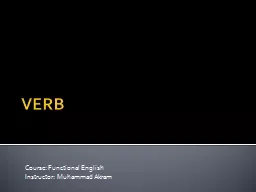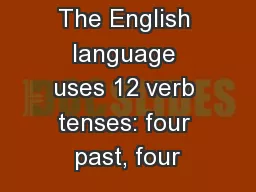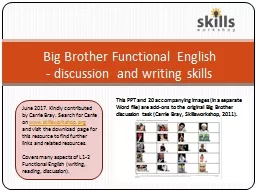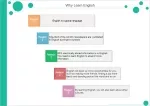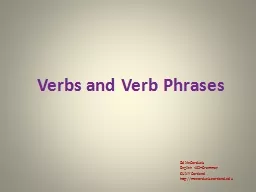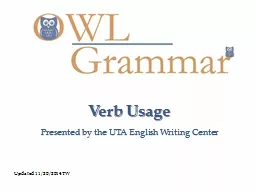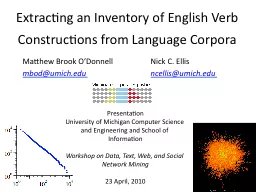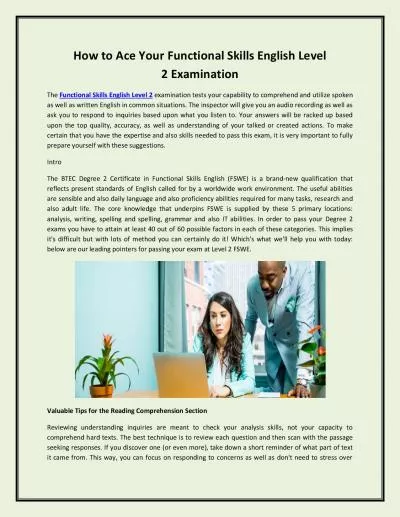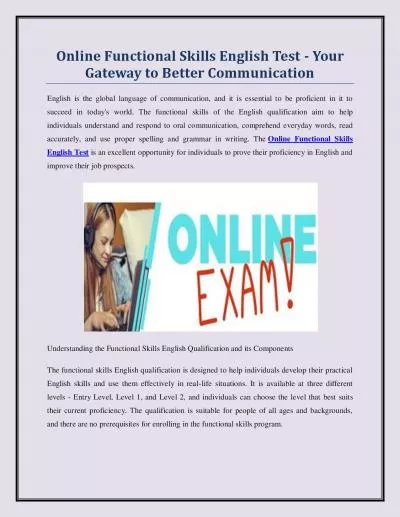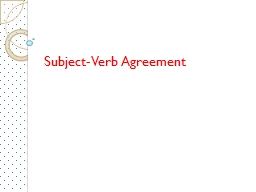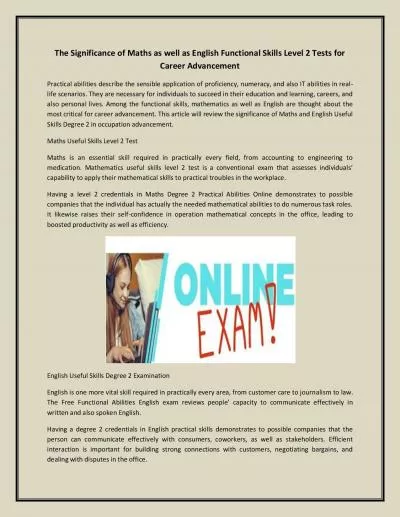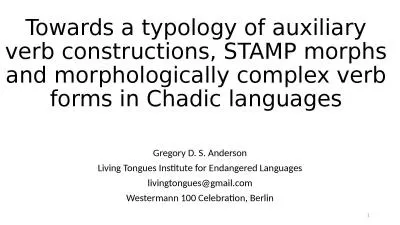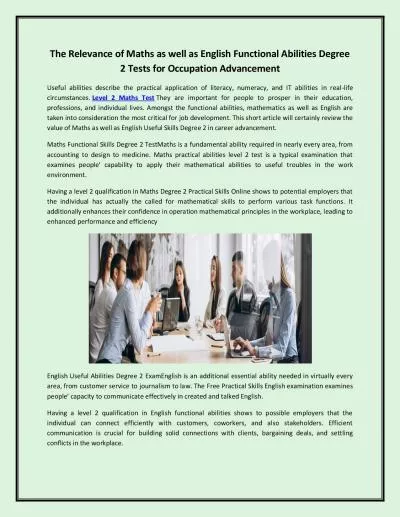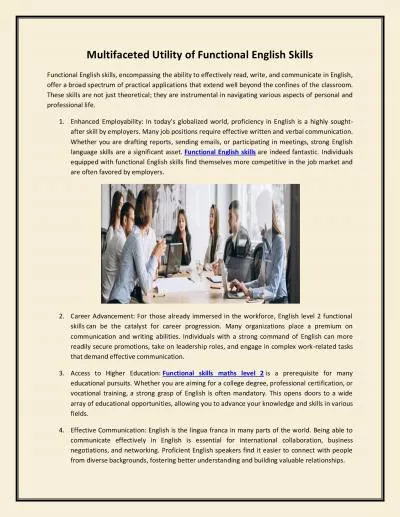PPT-VERB Course: Functional English
Author : chaptoe | Published Date : 2020-08-26
Instructor Muhammad Akram Verb A verb is often defined as a word which shows action or state of being The verb is perhaps the most important part of the sentence
Presentation Embed Code
Download Presentation
Download Presentation The PPT/PDF document "VERB Course: Functional English" is the property of its rightful owner. Permission is granted to download and print the materials on this website for personal, non-commercial use only, and to display it on your personal computer provided you do not modify the materials and that you retain all copyright notices contained in the materials. By downloading content from our website, you accept the terms of this agreement.
VERB Course: Functional English: Transcript
Download Rules Of Document
"VERB Course: Functional English"The content belongs to its owner. You may download and print it for personal use, without modification, and keep all copyright notices. By downloading, you agree to these terms.
Related Documents

